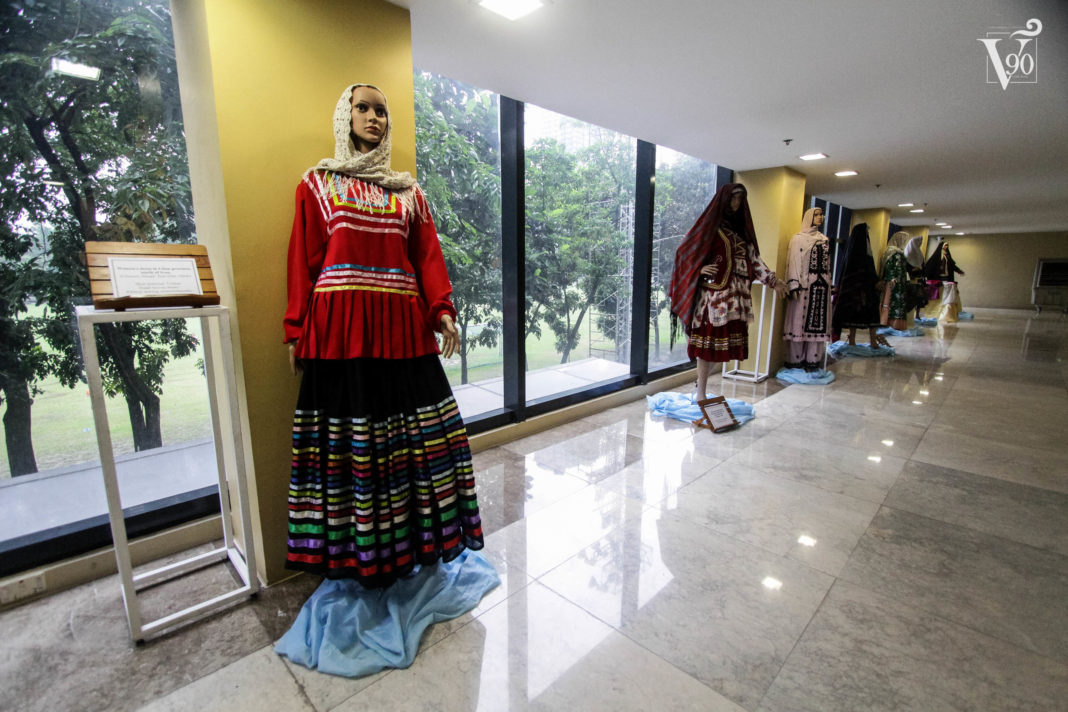RENOWNED designer Shahin Ebrahimzadeh-Pezeshki adorned the mezzanine hall of the Buenaventura Garcia Paredes, O.P. Building from Oct. 9 to 11 with traditional Iranian dresses and other colorful Middle Eastern textiles.
Her exhibit, titled “Colors of Diversity,” was brought to the University in partnership with the Embassy of Islamic Republic of Iran-Manila.
Pezeshki, who is the dean of Traditional Iranian Garments Faculty of the Karaj University of Arts and Culture in Iran, visited the country to introduce her country’s culture using her intricately designed folk costumes of Iranian women from their different provinces and tribes.
“I would like to show the identification of each tribe in Iran,” Pezeshki told the Varsitarian. “One is able to discern the identity of a nation through the dresses that they have. It’s also a way of preserving civilization and cultural heritage.”
Among the primary costumes exhibited were the traditional dresses of the Sistani women of Sistan-va-Baluchestan Province, which are made of light-colored cotton fabric.
The Kurdish dress, worn by northwestern tribeswomen of Iran, has layers of silk draped against patterns of fruits, which are accented by gold linings. Meanwhile, the Isfanahi dress, a silk dress with overlays of satin ornamentation, originates from Iran’s central district.
A dress with a long black vest Iranian fashion designer flaunts traditional dresses embroidered with floral patterns and coupled with a purple overhead clothing identifies with the Turkamen ladies from Gonbad City, who usually wear dresses sewn with silk yarn as its primary material.
Shared connections
Some Iranian designs, Pezeshki noted, have striking similarities with that of the traditional Philippine designs.
“I saw the National Museum of the Philippines and realized that the ornament and design which they put in the dresses is exactly what we have in one of our provinces in Iran,” she said. “To find such similarities is very interesting considering that our countries are proximately distant.”
These similarities were ideally documented in the materials she used: garments of Kurdish
women, for example, are printed withalternating straight and rugged lines at the edges. Dresses from the country’s southern city of Minab are heavy on embroidery while. pieces from Gilan, North Iran are embellished with ribbons.
Mohammad Jafarimalak, cultural counselor of the Embassy of Iran, said nature and daily life experiences define the works of Iranian fashion designers.
The exhibit, he said, aimed to bring people together as politics have created tensions and
divisions between nation states.
“When we introduce each nation based on their own identity and matter of natural heritage, people get to know each other in a very good way.”
The exhibit had been to the Rizal Park as its first stop, with UST and the University of the Philippines-Diliman as its second and third stop, respectively.














